La Perouse Bay – also known as Keoneʻōʻio– is located at “the end of the road” in South Maui, a few miles beyond Makena State Park. This region is known for its rugged lava landscapes, dramatic coastline, and hiking trails.
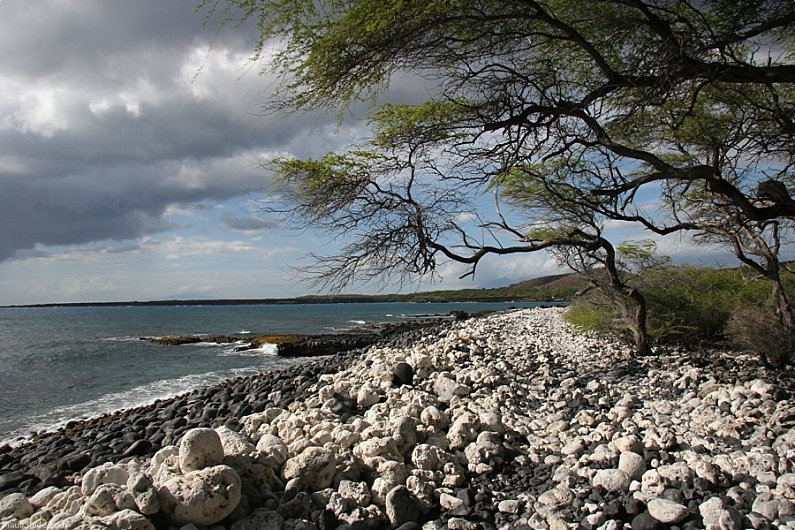
Arid and remote, there are few amenities in this area – aside from a porta-potty or two, a dumpster, and a lone luxury home hidden behind a tangle of kiawe trees (rumored to be owned by Jeff Bezos).
But La Perouse’s isolation is precisely what draws visitors to its shores. The region attracts hikers, sightseers, and nature lovers hoping to discover a different side of Maui.
And while this rocky volcanic region might seem desolate at first glance, you’ll soon find that La Perouse is teeming with wildlife, history, and magic.
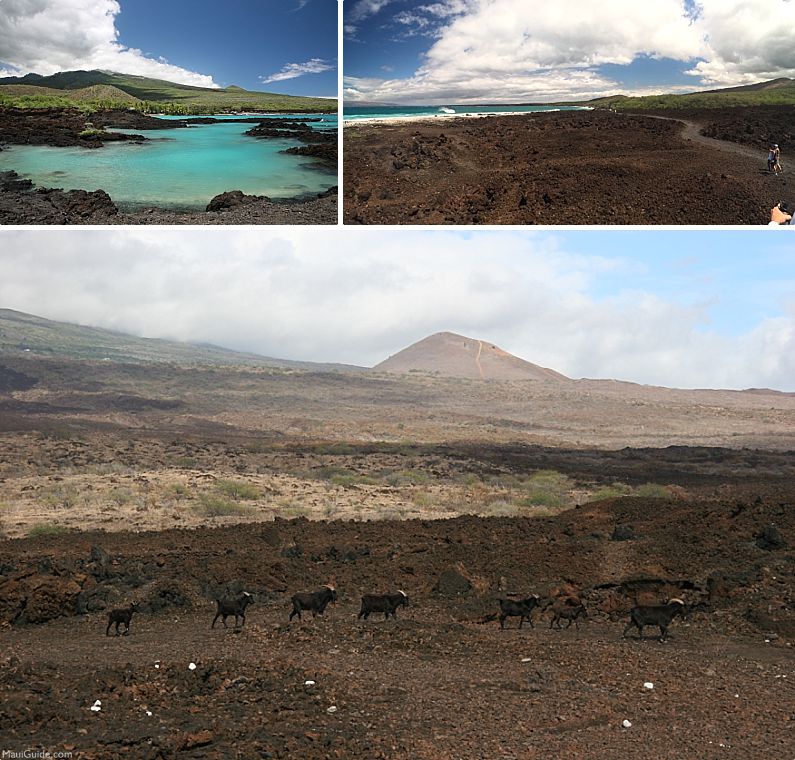
Getting There
Getting to La Perouse is easy. As we mentioned above, La Perouse is at the “end of the road” – Makena Road, specifically. There is only one way in and one way out.
You’ll drive through Kihei and Wailea to reach Makena Alanui Road, which becomes Makena Road. Stay on Makena Road until you reach the gravel parking lot at La Perouse, about three miles past Makena State Park (Big Beach). This is the end of the road.
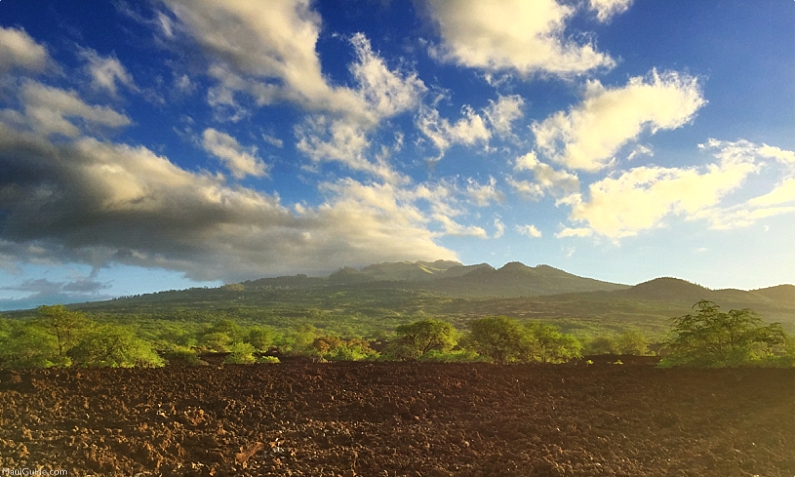
The drive to La Perouse is half the fun of visiting. Once you pass Big Beach, you’ll wind along the coastline on a narrow, one-ish-lane road. The route travels through the Ahihi-Kinau Natural Area Reserve – home to some of Maui’s best snorkeling spots like Ahihi Cove and Dumps (also known as Kanahena).
Past the Dumps parking lot, you’ll drive through an immense lava plain. From this vantage point, you’ll be able to see the puʻu (cinder cone) on Haleakala’s flank that created this lava field a few hundred years ago.
It’s important to note that there are no gas stations past Kihei, so make sure you have enough gas for the trip. The road to La Perouse is also very narrow and potholed, with few places to pull off, but most rental cars can easily make the trip.
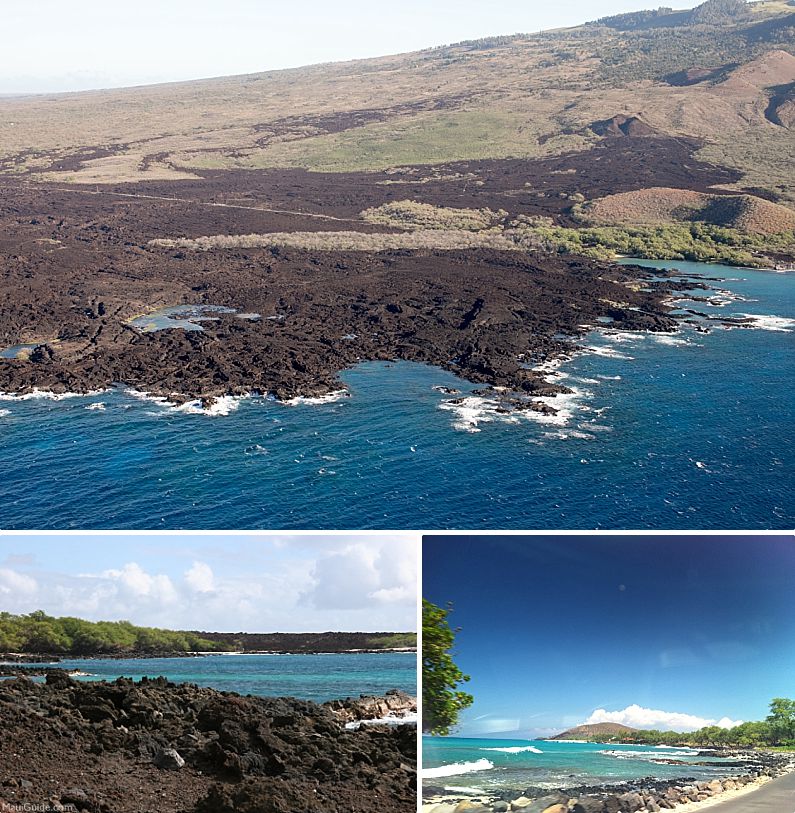
Parking
Once you arrive at La Perouse, you will park in the gravel parking lot. There are no marked stalls, and the parking lot can sometimes be very busy, so please do your best to park mindfully – and avoid the sharp aʻa lava!
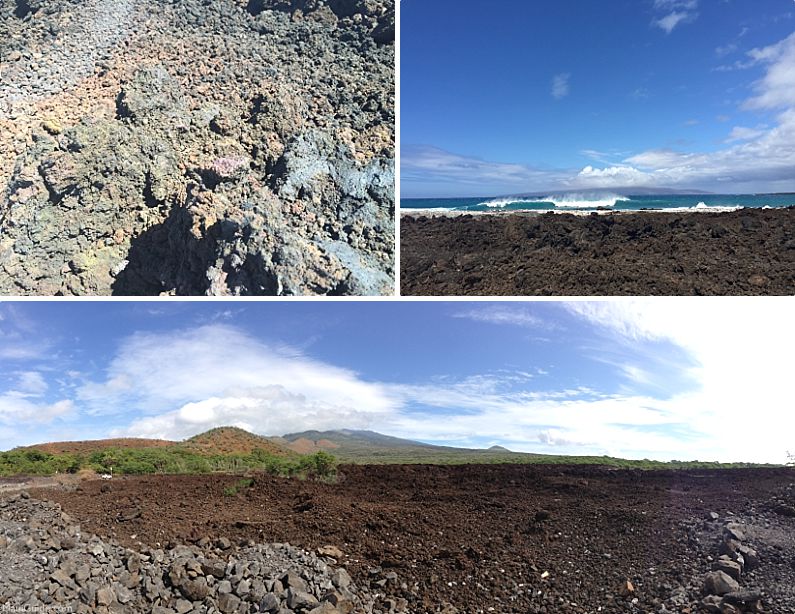
History
From the parking lot, you’ll have a view of the entirety of La Perouse Bay and Cape Hanamanioa to the south. These places are home to a storied, little-known history.
In May 1786, Lapérouse, a French admiral, landed in Keoneʻōʻio Bay during a worldwide scientific expedition – becoming the first European to visit Maui. During his two days on the island, he visited four small villages in the Keoneʻōʻio area before sailing west up the island chain.
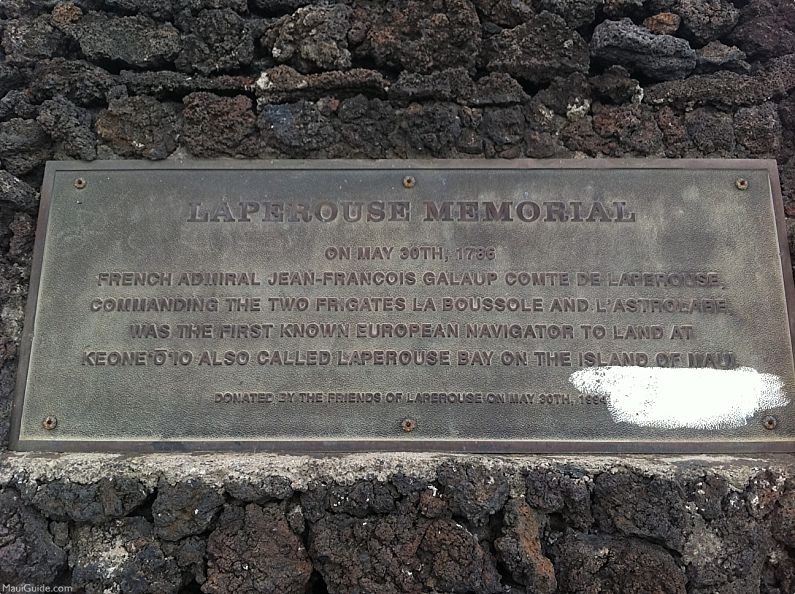
The La Perouse area is also home to the best-preserved section of Maui’s “King’s Trail.” The King’s Trail was once a circumnavigational island route, believed to have been completed by King Piʻilani in the 16th century. The La Perouse section of the trail was restored in the 1800s and is now part of the popular Hoapili Trail.
The region is also the site of Maui’s most recent lava flow. Haleakala’s last eruption spilled from the southwest rift zone towards the coast, forming the area’s rugged lava plains. This eruption is thought to have occurred around 1790, although some experts say it was much earlier.
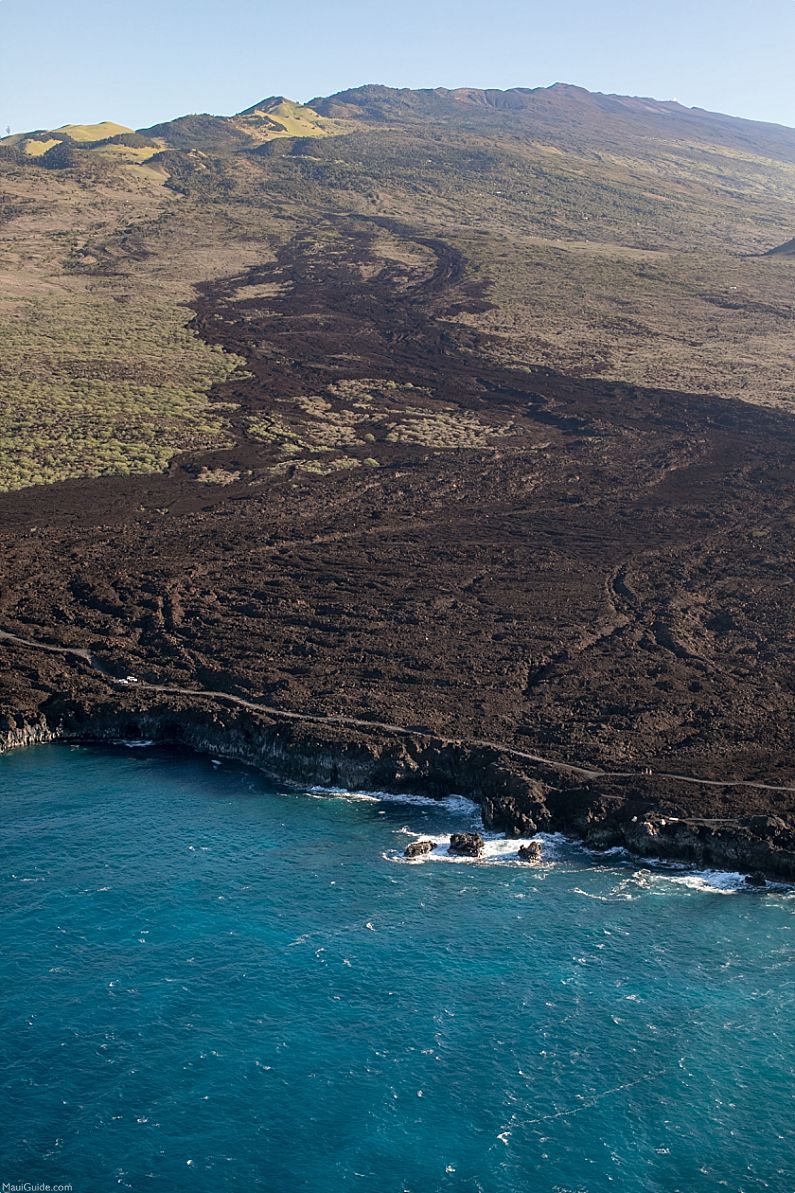
Things To Do
If you’re an outdoor lover, there are plenty of things to do in the La Perouse region!
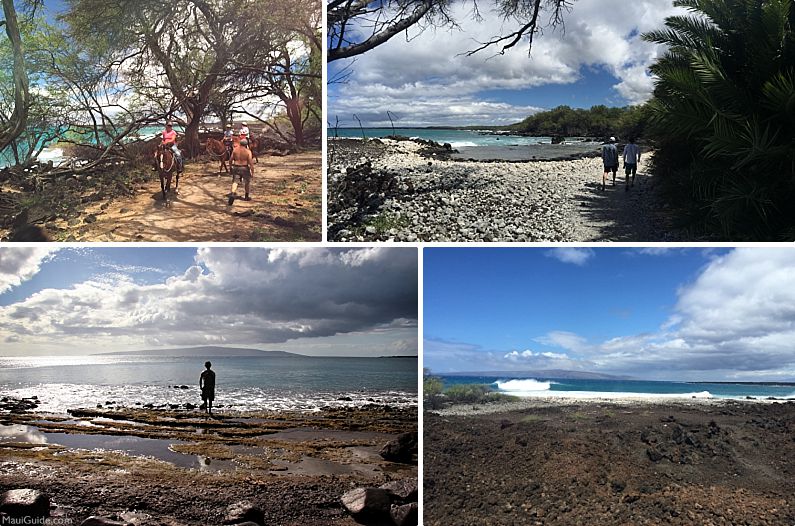
Hiking
Hiking is the biggest allure for most visitors to La Perouse Bay. The Hoapili Trail is one of the most popular – albeit rugged – hiking trails on Maui. The Hoapili Trail starts at the parking lot at La Perouse Bay and winds along the coastline, through kiawe groves, past secluded coves, and through lava deserts. You’ll also likely spot wildlife like feral goats and – if you’re extra lucky – spinner dolphins!
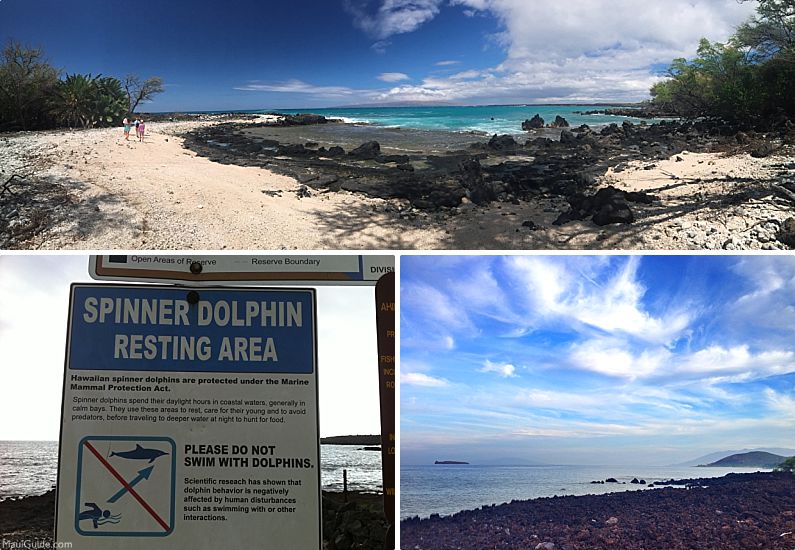
After about a half mile, the trail splits. One route takes you through 1.5 miles of lava desert to Kanaio Beach, but there’s no shade, shelter, or ocean breezes along the way – a deterrent for most hikers.
Most visitors opt to take the coastal route, which hugs the coast along Cape Hanamanioa for about a mile before reaching Hanamanioa Lighthouse. Here, sweeping coastal views and great photo ops abound.
Snorkeling
Snorkeling near the La Perouse parking lot can be great, but it is for advanced snorkelers only! The currents can be strong, and the entry/exit from the water is tough – and sharp!
If you’re somewhat new to snorkeling, backtrack a few miles to Ahihi Cove in the Ahihi-Kinau Natural Area Reserve. The shallow, calm waters here boast an array of marine life, like tropical fish and sea turtles. To get to Ahihi, you’ll have to park in the Dumps parking lot and make the short walk to the cove.
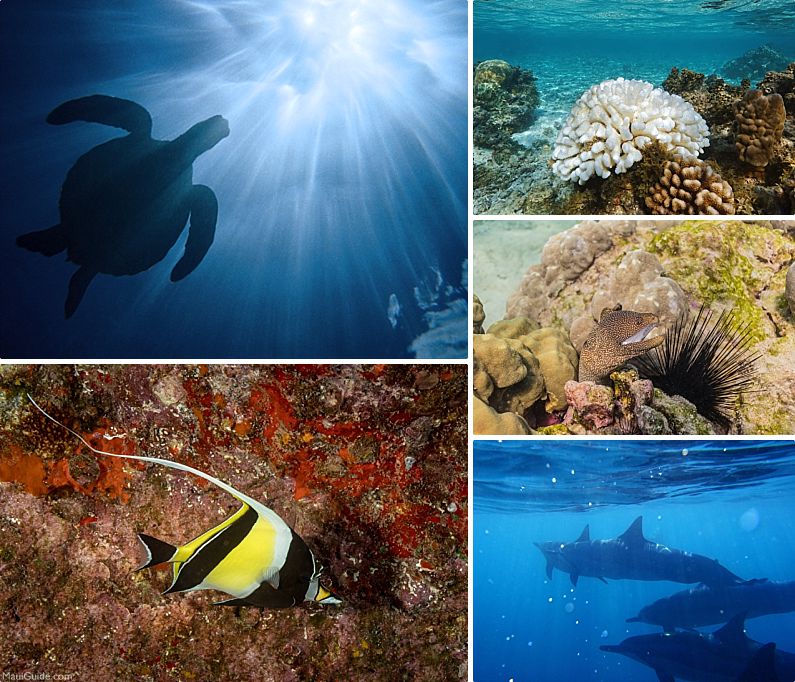
Alternatively, adept snorkelers can also snorkel at Dumps, but keep in mind currents can be strong, and the water entry/exit can be difficult here as well. Don’t forget your reef-safe sunscreen!
Sightseeing
Anyone who visits La Perouse can sightsee! The car ride alone is as scenic as scenic gets, and once you reach La Perouse, you can marvel at the unique lava coastline. If you come in the early morning, you might be able to see pods of spinner dolphins resting in the bay’s protected waters.
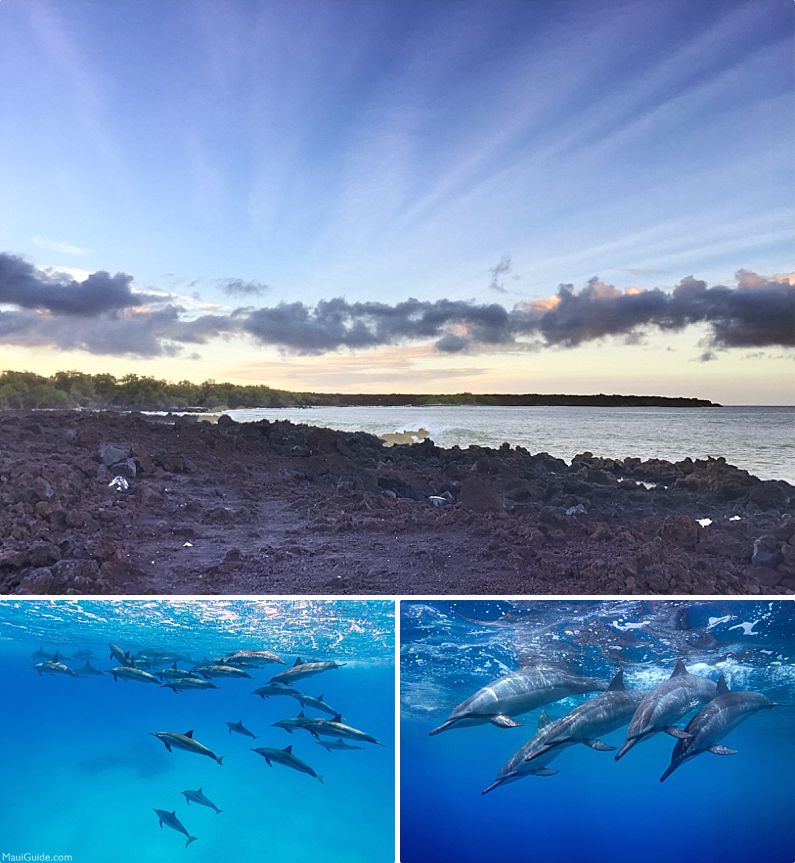
This area is also a great vantage point for Molokini Crater, Kahoʻolawe, and the multicolored slopes of Haleakala.
Things To Note
- The La Perouse area is very remote, and cell service is limited. Come prepared with water, snacks, sunscreen, and enough gasoline to get you back to Kihei.
- If you’re hiking, be sure to wear sturdy shoes and pack double the amount of water you think you need. The sharp lava rocks make for rough terrain, and it can get hot on the trails. Sunscreen is an absolute must as well. Be sure to stay on marked trails.
- The best time to visit La Perouse is in the early morning when the temperature is still cool, and the winds are light. Mornings offer the best chance of seeing spinner dolphins, and it will be less crowded as well.
- Parking at La Perouse is free, but you will have to pay to park at Dumps if you decide to visit Ahihi-Kinau Natural Area Reserve.
- La Perouse is a preferred habitat for Hawaiian spinner dolphins. The dolphins like to come into the bay to rest. Keep in mind that, as of 2023, it is illegal to swim with or approach spinner dolphins within 50 yards. DLNR officers are often in the area, and they will not hesitate to give you a fine.
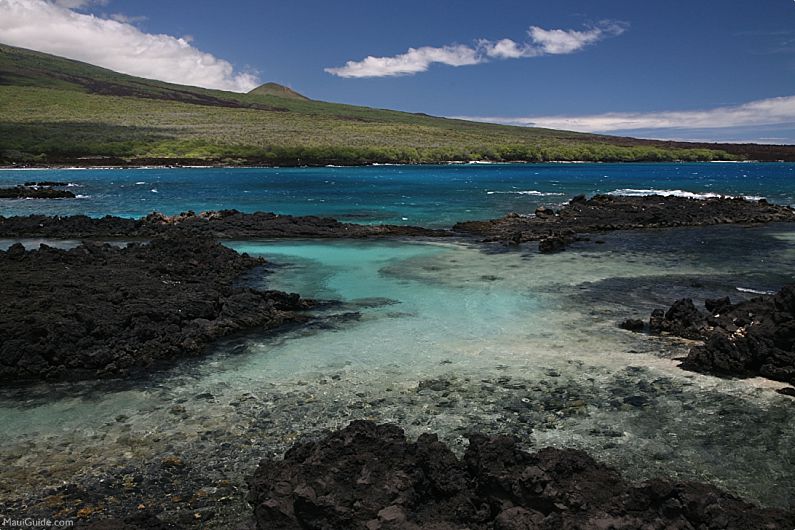
Have you explored this awe-inspiring region of Maui? Tell us about your favorite La Perouse Bay memory in the comments.

